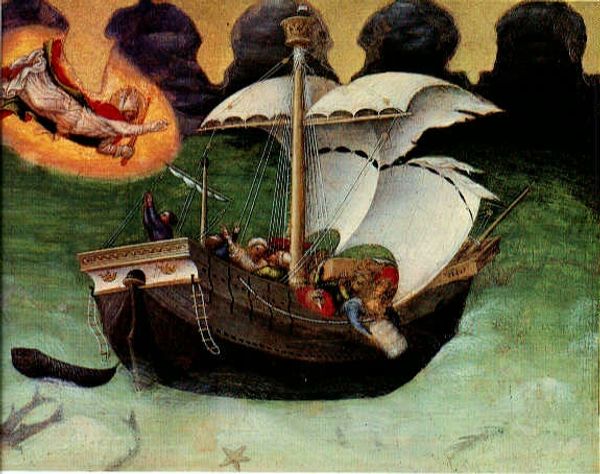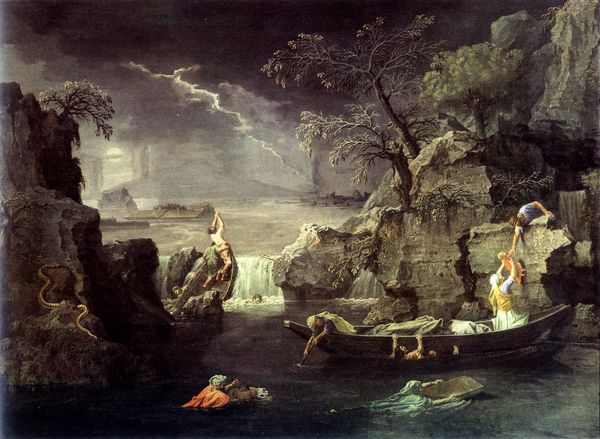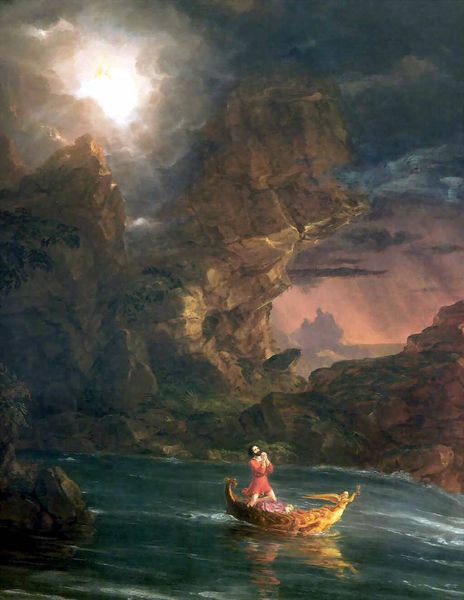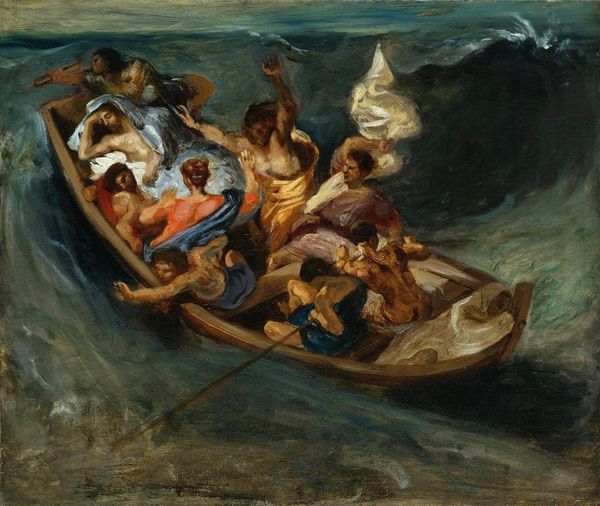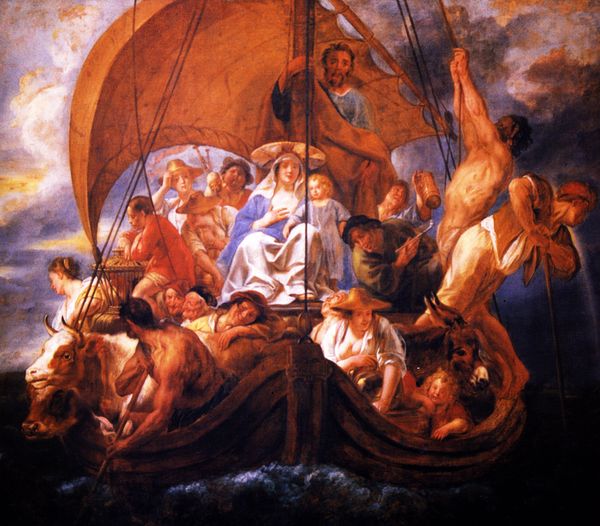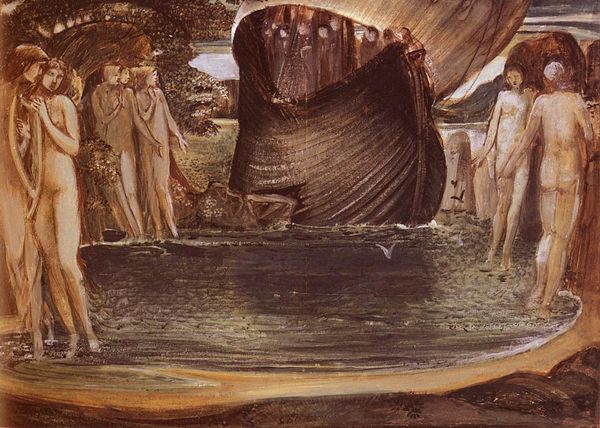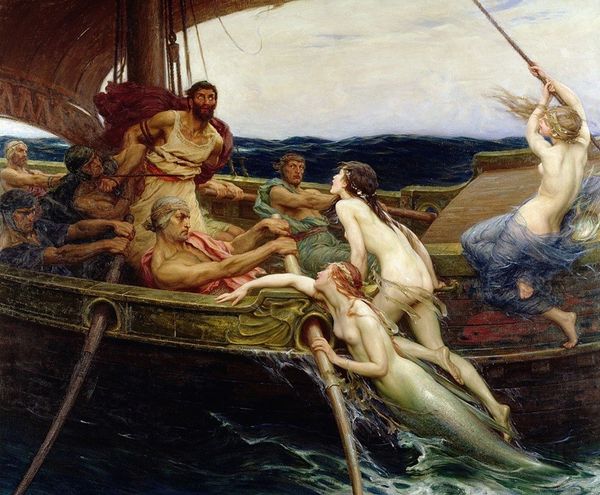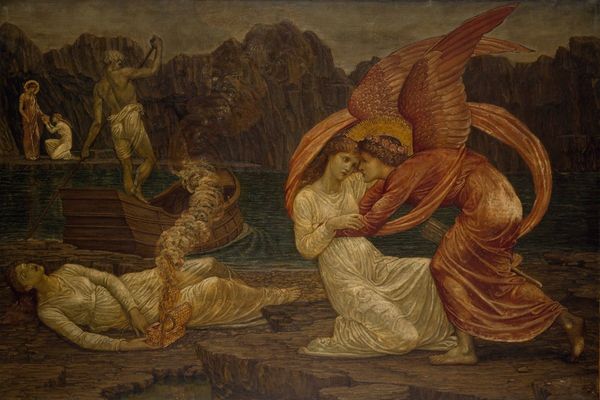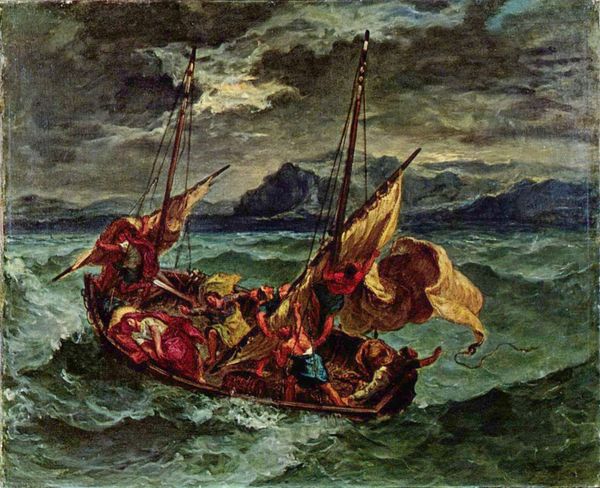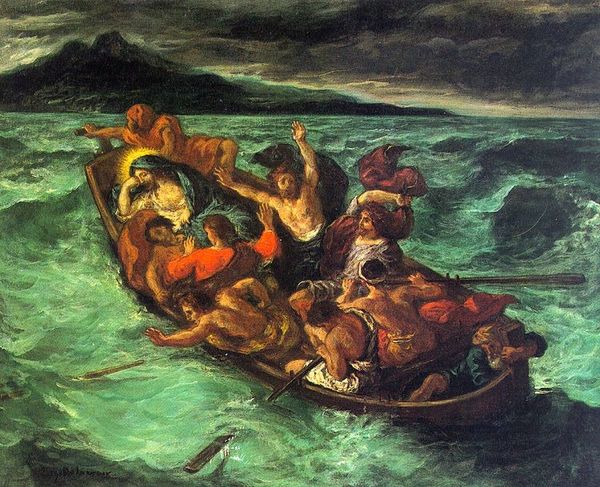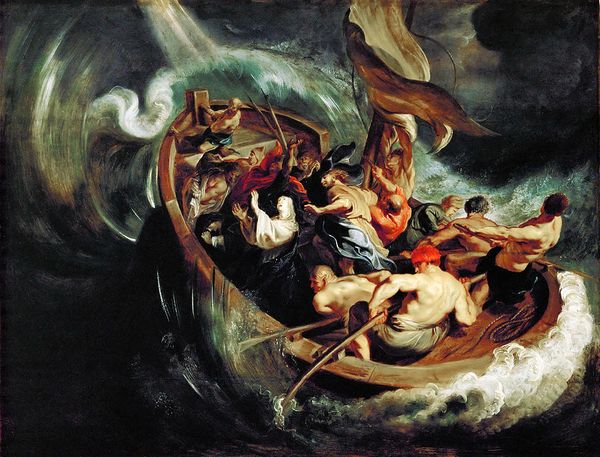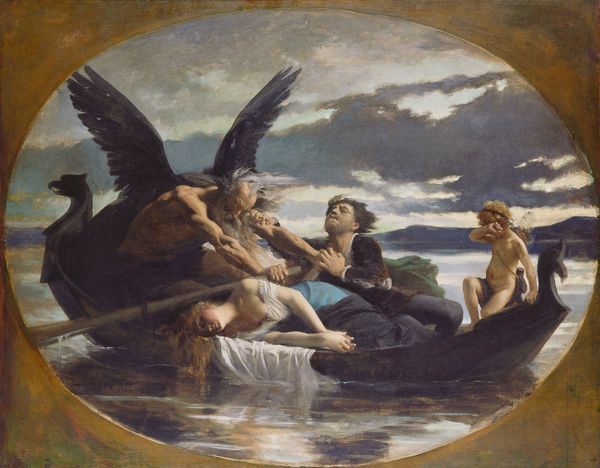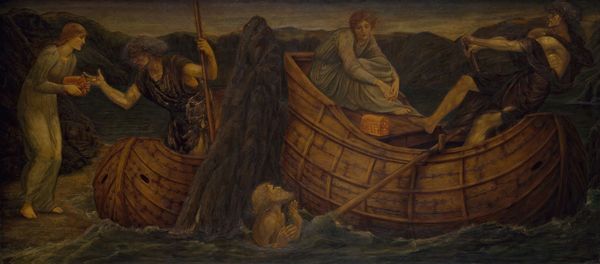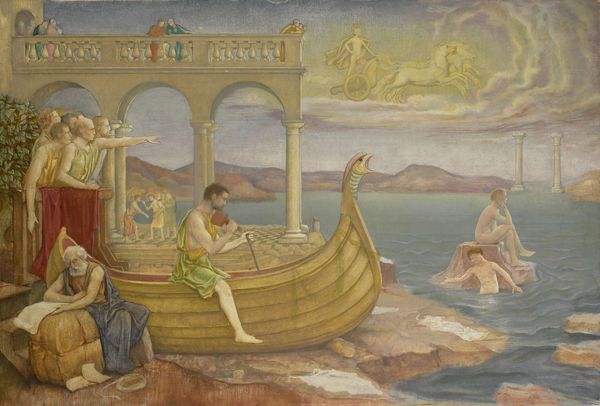
painting, oil-paint
#
narrative-art
#
painting
#
oil-paint
#
figuration
#
romanticism
#
history-painting
Copyright: Public domain
Curator: Today, we're examining Philipp Otto Runge's 1806 oil painting, "Peter Walks on Water". Editor: Visually, the composition is quite arresting, wouldn’t you say? The contrast between the roiling sea, the ship about to capsize, and then this central figure striding serenely seems staged almost. The color palette is equally dynamic—ranging from dark brooding blues and browns, to bright whites and reds, the artist uses contrast and light to lead us in. Curator: Runge painted this during a period of great political upheaval in Europe, marked by the Napoleonic Wars. The painting portrays a biblical scene but in relation to broader concepts that the means and the modes of social change are affected, mediated, and achieved in this precise moment in time, doesn't it? Runge experienced first hand war, occupation and a total lack of trade. Editor: Interesting observation about this painting! For me it resonates primarily due to its raw emotional intensity! This palpable fear and desperation depicted on the faces of the passengers in the ship juxtaposed with Saint Peter’s fall from grace. Curator: Precisely! If you consider Runge's socio-economic standing at the time, he came from a family of shipowners deeply involved in maritime trade, Runge knew very well that this mode of existence was under severe economic hardship. The Romantic turn back to religion and folklore served as a powerful mode of dealing with harsh reality in the public consciousness, which impacted Runge who sought to synthesize it with new painting. Editor: Absolutely, you can feel that in the surface. And considering it formally, I think Runge created a really interesting dynamic in rendering this story with its central placement of a figure not quite successful. Peter is a beacon for both disaster and possible hope. It's a complicated read emotionally. Curator: Well, this synthesis—between biblical narrative and contemporary economic reality, painted with raw emotion—does, to my eye, render Runge’s vision as potent artifact from a society trying to redefine itself through the disruption. Editor: Indeed, analyzing the formal strategies Runge deploys certainly sheds new light on the piece. His painting remains a profound expression of human anxieties painted in response to very peculiar, trying, even catastrophic circumstances.
Comments
No comments
Be the first to comment and join the conversation on the ultimate creative platform.
